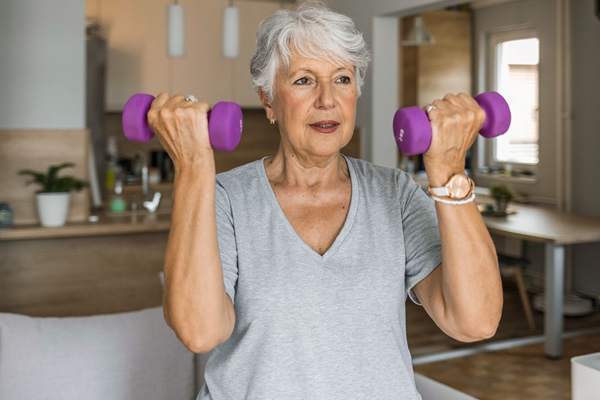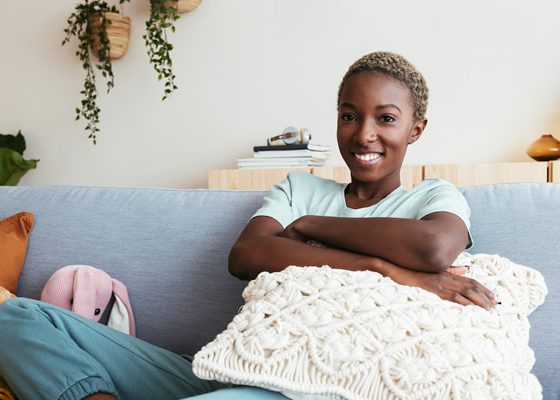
The importance of physical activity spans far beyond mere fitness; it is a cornerstone of longevity, influencing numerous aspects of our physical and mental health. This comprehensive exploration delves into how maintaining a physically active lifestyle can extend life expectancy, improve quality of life, and contribute to overall well-being.
The Connection Between Physical Activity and Longevity
The relationship between physical activity and longevity is well-documented in scientific literature. Numerous studies have shown that regular physical activity can reduce the risk of chronic diseases, improve mental health, and enhance the overall quality of life, all of which contribute to a longer lifespan.
Cardiovascular Health
One of the primary ways in which physical activity promotes longevity is through its beneficial effects on cardiovascular health. Engaging in regular exercise strengthens the heart muscle, improves circulation, and helps maintain healthy blood pressure levels. It also reduces the risk of heart disease, one of the leading causes of death globally. Aerobic exercises, such as running, swimming, and cycling, are particularly effective in enhancing cardiovascular health.
Metabolic Health
Physical activity also plays a crucial role in maintaining metabolic health. Regular exercise helps regulate blood sugar levels, reduces insulin resistance, and lowers the risk of type 2 diabetes. This is particularly important as metabolic disorders are closely linked to an increased risk of mortality.
Weight Management
Maintaining a healthy weight is essential for longevity, and physical activity is a key factor in achieving and sustaining an optimal weight. Exercise burns calories, builds muscle mass, and boosts metabolism, all of which contribute to effective weight management. Obesity, on the other hand, is associated with numerous health complications, including cardiovascular disease, diabetes, and certain cancers, all of which can shorten life expectancy.
Physical Activity and Mental Health

The importance of physical activity extends beyond physical health to mental well-being. Regular exercise has been shown to reduce symptoms of depression and anxiety, improve mood, and enhance cognitive function. These mental health benefits are crucial for a long and fulfilling life.
Stress Reduction
Exercise is a powerful stress reliever. Physical activity stimulates the production of endorphins, chemicals in the brain that act as natural painkillers and mood elevators. This can lead to a feeling of euphoria often referred to as the “runner’s high.” Regular physical activity also helps reduce levels of the body’s stress hormones, such as adrenaline and cortisol.
Cognitive Function
There is growing evidence that physical activity can help maintain cognitive function and reduce the risk of neurodegenerative diseases like Alzheimer’s. Exercise promotes the production of neurotrophic factors, which support the growth and survival of neurons, and enhances neuroplasticity, the brain’s ability to reorganize itself by forming new neural connections.
Types of Physical Activity for Longevity

Not all physical activities are created equal when it comes to promoting longevity. A balanced approach that includes various types of exercise can provide comprehensive health benefits.
Aerobic Exercise
Aerobic exercises, such as walking, jogging, swimming, and cycling, are particularly effective for improving cardiovascular health and overall fitness. These activities increase heart rate and breathing, which strengthens the heart and lungs and improves the efficiency of the cardiovascular system.
Strength Training
Strength training, including weight lifting and resistance exercises, is essential for building and maintaining muscle mass, which tends to decrease with age. Strong muscles support joint health, improve balance, and reduce the risk of falls and fractures, particularly in older adults.
Flexibility and Balance Exercises
Flexibility and balance exercises, such as yoga and tai chi, enhance joint mobility, reduce the risk of injuries, and improve overall physical function. These activities are especially beneficial for older adults, helping to maintain independence and reduce the risk of falls.
Physical Activity Across the Lifespan
The importance of physical activity is evident at all stages of life. However, the type and intensity of activity should be tailored to different age groups to maximize benefits and minimize risks.
Childhood and Adolescence
For children and adolescents, physical activity is crucial for healthy growth and development. It supports bone and muscle development, helps maintain a healthy weight, and promotes psychological well-being. Encouraging young people to participate in sports and outdoor activities can establish lifelong habits of physical activity.
Adulthood
In adulthood, regular physical activity is vital for maintaining health, preventing chronic diseases, and managing stress. Adults should aim for a mix of aerobic exercise, strength training, and flexibility exercises to achieve a well-rounded fitness regimen.
Older Adults
For older adults, physical activity helps maintain mobility, balance, and independence. It can also reduce the risk of age-related diseases, improve mental health, and enhance quality of life. Activities such as walking, swimming, strength training, and balance exercises are particularly beneficial.
Overcoming Barriers to Physical Activity
Despite the well-documented benefits, many people struggle to incorporate regular physical activity into their lives. Common barriers include lack of time, motivation, and access to facilities. Understanding and addressing these barriers is crucial for promoting a more active lifestyle.
Time Management
One of the most common excuses for not exercising is a lack of time. However, physical activity does not require large time commitments. Short, high-intensity workouts, known as High-Intensity Interval Training (HIIT), can provide significant health benefits in a relatively short period. Additionally, integrating physical activity into daily routines, such as taking the stairs instead of the elevator or walking or biking to work, can help increase activity levels without requiring extra time.
Motivation
Maintaining motivation can be challenging, especially when starting a new exercise regimen. Setting realistic goals, tracking progress, and finding activities that are enjoyable can help sustain motivation. Social support, such as exercising with friends or joining a fitness class, can also enhance commitment to regular physical activity.
Access to Facilities
Lack of access to facilities or safe environments for exercise can be a significant barrier, particularly in underserved communities. Public policies that promote the development of parks, walking trails, and community centers can help create environments that encourage physical activity. Additionally, home-based exercise routines, online workout programs, and mobile fitness apps can provide alternatives for those with limited access to traditional fitness facilities.
The Importance of Physical Activity in Disease Prevention
Physical activity is a powerful tool for preventing a wide range of diseases. Its role in disease prevention underscores the importance of physical activity for a longer, healthier life.
Cardiovascular Diseases
Regular physical activity reduces the risk of developing cardiovascular diseases, including heart disease and stroke. It helps lower blood pressure, improve cholesterol levels, and reduce inflammation, all of which contribute to cardiovascular health.
Type 2 Diabetes
Exercise enhances insulin sensitivity and helps regulate blood sugar levels, reducing the risk of type 2 diabetes. For individuals with diabetes, regular physical activity can help manage the condition and prevent complications.
Cancer
There is evidence that regular physical activity can reduce the risk of certain cancers, including breast, colon, and lung cancer. Exercise helps regulate hormones, reduce inflammation, and improve immune function, all of which may contribute to cancer prevention.
Osteoporosis
Weight-bearing and resistance exercises are particularly beneficial for bone health. These activities help maintain bone density and reduce the risk of osteoporosis and fractures, particularly in postmenopausal women.
Mental Health Disorders
Physical activity is effective in preventing and managing mental health disorders such as depression and anxiety. Exercise promotes the release of endorphins and other neurotransmitters that improve mood and reduce stress.
Implementing Physical Activity into Daily Life
Integrating physical activity into daily life is essential for reaping its longevity benefits. Here are some practical tips for incorporating exercise into everyday routines:
Start Small
For those who are new to exercise, starting with small, manageable goals can help build confidence and establish a routine. Even short bouts of activity, such as a 10-minute walk, can be beneficial and serve as a stepping stone to longer workouts.
Find Enjoyable Activities
Engaging in activities that are enjoyable increases the likelihood of maintaining a regular exercise routine. Whether it’s dancing, hiking, playing a sport, or gardening, finding pleasure in physical activity can make it feel less like a chore and more like a rewarding part of life.
Make It Social
Exercising with friends, family, or a workout group can provide motivation, accountability, and enjoyment. Social interaction during physical activity can also enhance mental well-being.
Incorporate Activity into Daily Tasks
Physical activity doesn’t have to be confined to the gym. Incorporating movement into daily tasks, such as walking or biking to work, taking the stairs, or doing active household chores, can significantly increase daily activity levels.
Set Goals and Track Progress
Setting specific, achievable goals and tracking progress can help maintain motivation and provide a sense of accomplishment. Fitness trackers, mobile apps, and journals can be useful tools for monitoring activity levels and setting new challenges.
The Importance of Physical Activity
Physical Health Benefits
The importance of physical activity is evident in its broad spectrum of physical health benefits, which contribute to longevity:
- Weight Management: Regular exercise helps burn calories and build muscle, which can help maintain or achieve a healthy weight, reducing the risk of obesity-related conditions.
- Bone Health: Weight-bearing and resistance exercises strengthen bones, reducing the risk of osteoporosis and fractures, common issues in older adults.
- Muscular Strength: Maintaining muscle mass and strength through physical activity helps preserve mobility and functional independence, essential for a high quality of life as one ages.
Mental Health Benefits
The importance of physical activity extend beyond physical health, profoundly impacting mental well-being:
- Cognitive Function: Exercise has been shown to enhance cognitive function, improve memory, and delay the onset of cognitive decline and dementia.
- Mood Enhancement: Physical activity boosts the production of endorphins and serotonin, chemicals in the brain that promote feelings of well-being and reduce symptoms of depression and anxiety.
- Stress Reduction: Regular exercise helps lower stress levels by reducing the production of stress hormones like cortisol and increasing relaxation responses.
Types of Physical Activity
The importance of physical activity for longevity, it is crucial to engage in a variety of exercises. These can be broadly categorized into aerobic, strength training, flexibility exercises, and balance training.
Aerobic Exercise
Also known as cardiovascular exercise, aerobic activity includes exercises that increase the heart rate and breathing. Examples include walking, running, cycling, swimming, and dancing. Aerobic exercise is particularly effective in improving heart health, lung capacity, and endurance.
Strength Training
Strength training involves exercises that improve muscle strength and endurance. This can include weightlifting, resistance band exercises, and body-weight exercises like push-ups and squats. Strength training helps in maintaining muscle mass, bone density, and metabolic rate.
Flexibility Exercises
Flexibility exercises, such as stretching and yoga, improve the range of motion of muscles and joints. They help in preventing injuries, reducing stiffness, and enhancing overall physical performance.
Balance Training
Balance training includes exercises that improve stability and prevent falls, which are particularly important for older adults. Activities such as tai chi, yoga, and specific balance exercises can enhance proprioception and coordination.
Conclusion
The importance of physical activity for longevity and overall health is undeniable. Regular exercise contributes to cardiovascular health, metabolic function, weight management, and mental well-being, all of which are crucial for a long and healthy life. By understanding the various types of physical activity and how they benefit different aspects of health, individuals can create balanced and effective fitness routines tailored to their needs.
Overcoming barriers to physical activity and integrating exercise into daily life can be challenging, but the rewards are well worth the effort. With the right strategies and a commitment to staying active, anyone can enjoy the profound benefits of physical activity, paving the way for a stronger body and a longer, more fulfilling life.






